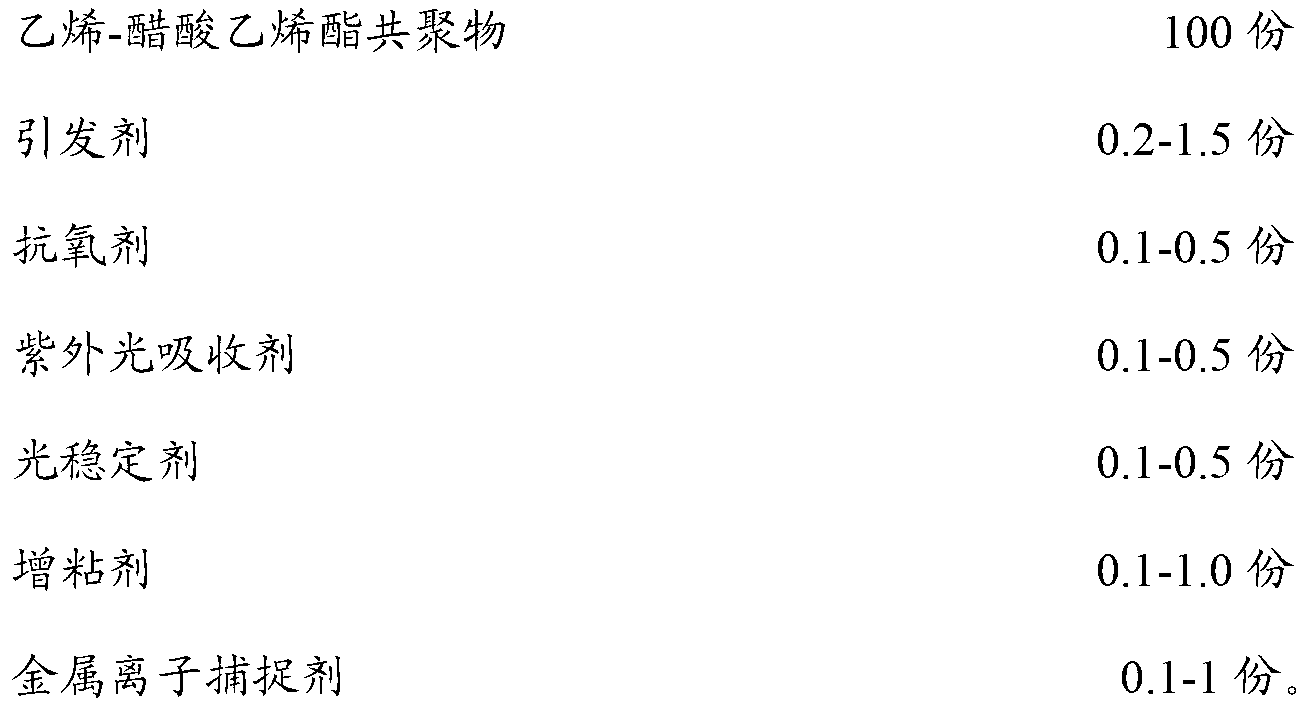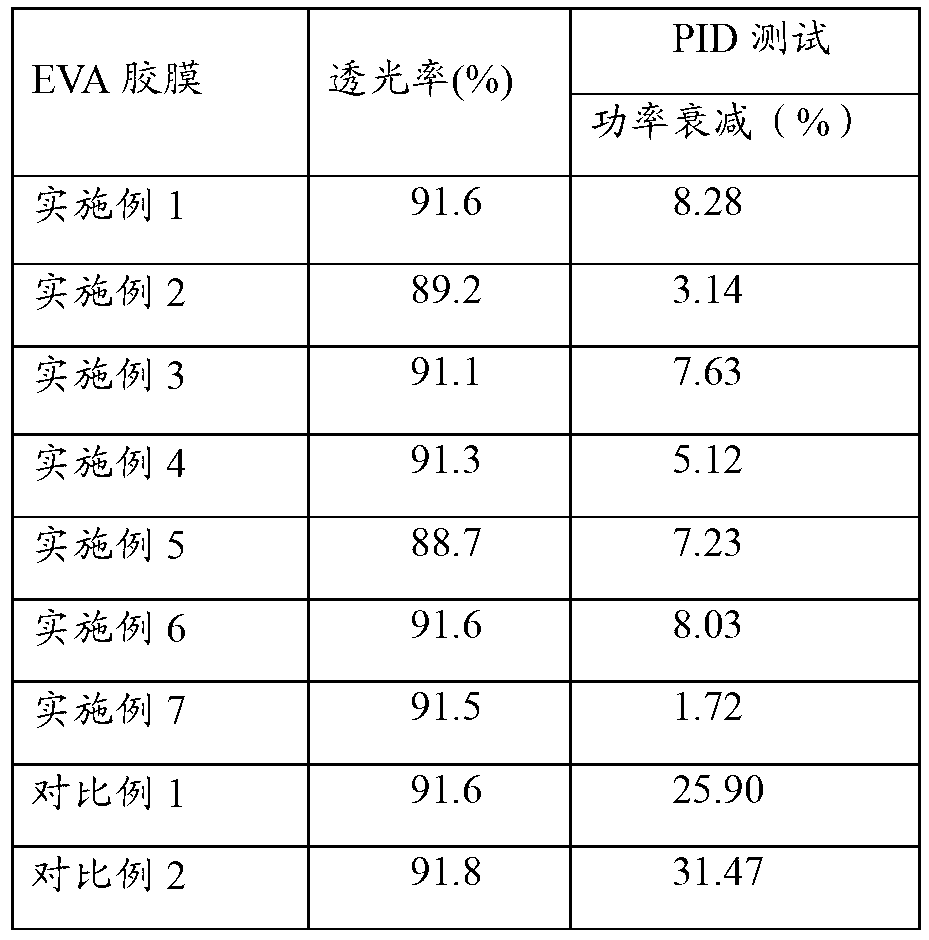EVA packaging adhesive film for resisting potential-induced degradation of photovoltaic module
A technology of potential-induced attenuation and encapsulation film, which is applied in photovoltaic power generation, circuits, adhesives, etc., can solve limitations and other problems, achieve the effect of weakening influence, reducing mobility, and simple method
- Summary
- Abstract
- Description
- Claims
- Application Information
AI Technical Summary
Problems solved by technology
Method used
Image
Examples
Embodiment 1
[0030]Add 0.2 parts of tert-butylperoxycarbonate-2-ethylhexyl, 0.5 parts of tris(nonylphenyl)phosphite, 0.1 parts of 2-hydroxy- 4-n-octyloxybenzophenone, 0.5 part 2-(2'-hydroxy-5'-methylphenyl)-benzotriazole, 0.1 part vinyltris(β-methoxyethoxy ) silane, 0.1 part Zr(HPO 4 ) 2 ·H 2 O, mixed evenly by a mixer, put into a casting machine, at 80°C, plasticized, extruded, stretched, drawn, and rolled to make an EVA film with a thickness of about 0.45mm.
Embodiment 2
[0032] Add 1.5 parts of tert-butyl peroxycarbonate-2-ethylhexyl, 0.1 parts of tris(nonylphenyl)phosphite, 0.5 parts of 2-hydroxy- 4-n-octyloxybenzophenone, 0.1 part 2-(2'-hydroxy-5'-methylphenyl)-benzotriazole, 1.0 part vinyltris(β-methoxyethoxy ) silane, 1 part Zr(HPO 4 ) 2 ·H 2 O, mixed evenly by a mixer, put into a casting machine, at 80°C, plasticized, extruded, stretched, drawn, and rolled to make an EVA film with a thickness of about 0.45mm.
Embodiment 3
[0034] Add 1.0 parts of tert-butyl peroxycarbonate-2-ethylhexyl, 0.3 parts of tris(nonylphenyl)phosphite, 0.3 parts of 2-hydroxy- 4-n-octyloxybenzophenone, 0.2 parts 2-(2'-hydroxy-5'-methylphenyl)-benzotriazole, 0.5 parts vinyltris(β-methoxyethoxy ) silane, 0.3 parts Zr(HPO 4 ) 2 ·H 2 O, mixed evenly by a mixer, put into a casting machine, at 80°C, plasticized, extruded, stretched, drawn, and rolled to make an EVA film with a thickness of about 0.45mm.
PUM
 Login to View More
Login to View More Abstract
Description
Claims
Application Information
 Login to View More
Login to View More - Generate Ideas
- Intellectual Property
- Life Sciences
- Materials
- Tech Scout
- Unparalleled Data Quality
- Higher Quality Content
- 60% Fewer Hallucinations
Browse by: Latest US Patents, China's latest patents, Technical Efficacy Thesaurus, Application Domain, Technology Topic, Popular Technical Reports.
© 2025 PatSnap. All rights reserved.Legal|Privacy policy|Modern Slavery Act Transparency Statement|Sitemap|About US| Contact US: help@patsnap.com


